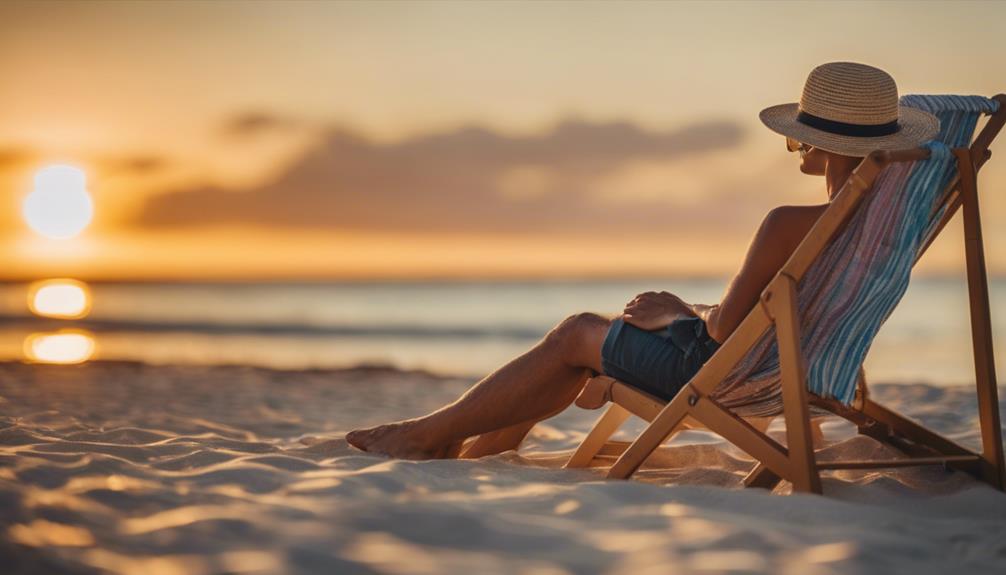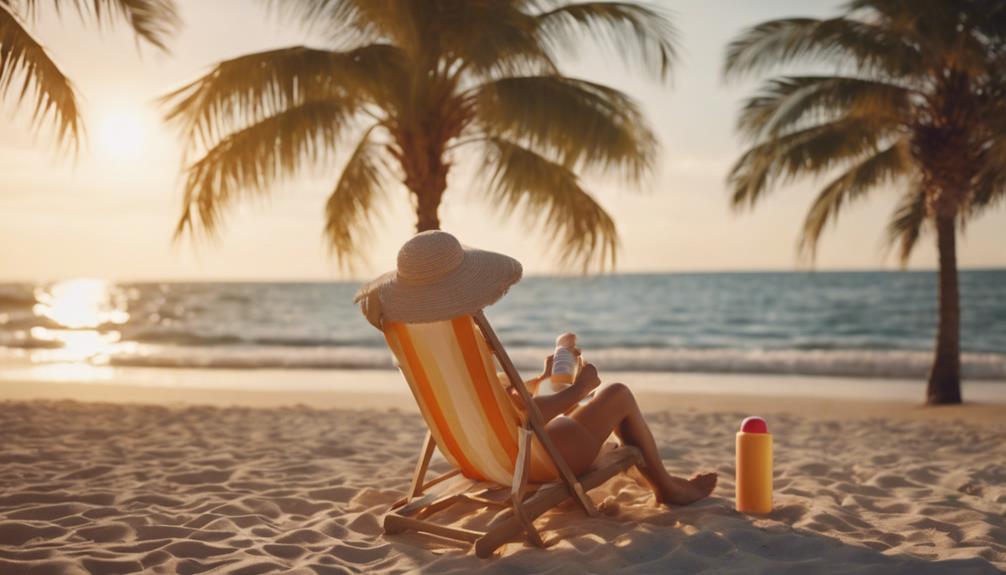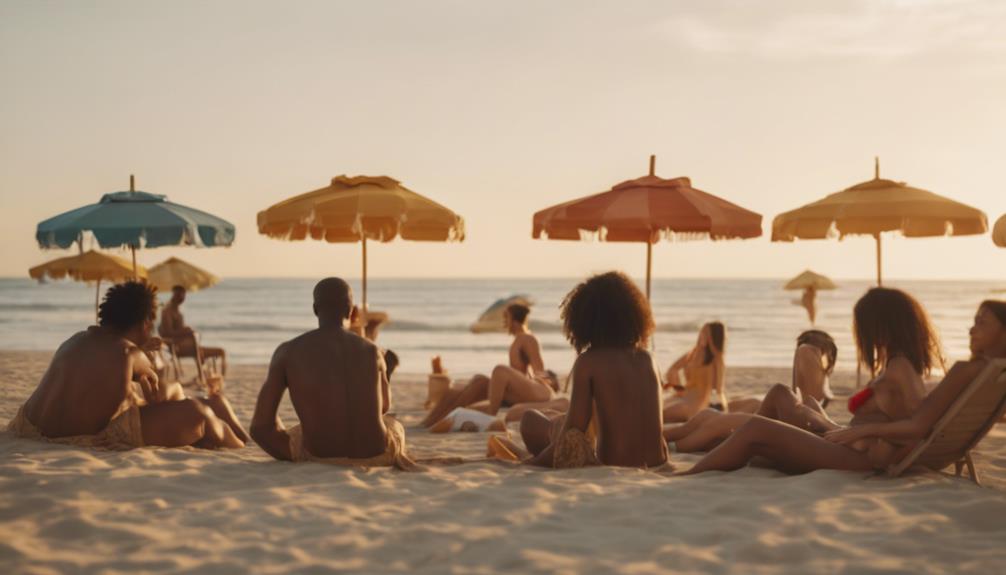To protect your eyes while tanning, you need to wear high-quality goggles that fit snugly and cover your entire eye area. Even when your eyelids are closed, harmful UV rays can penetrate, making eye protection essential. Check your goggles regularly for any wear or gaps to guarantee complete coverage. You might also consider using UV-blocking stickers for extra protection. Keeping your tanning sessions to 15-20 minutes and spacing them out will help reduce UV exposure. For a deeper understanding of the best practices and methods to guarantee your eye safety, there's plenty more to explore.
Key Takeaways
- Always wear high-quality UV-blocking goggles to protect your eyes from harmful rays during tanning sessions.
- Ensure goggles fit snugly and cover the entire eye area to prevent UV exposure.
- Limit tanning sessions to 15-20 minutes and monitor skin for any irritation.
- Consider using UV-blocking stickers for additional eye protection during and after tanning.
Importance of Eye Protection
Protecting your eyes during tanning is essential, as harmful UV rays can penetrate even closed eyelids, putting your vision at risk.
Using protective goggles during tanning sessions is a must; they act as a barrier against UV exposure. Remember, about 25% of UV radiation can still reach your eyes with your eyes shut. Salons often provide spare goggles if you forget yours, so don't hesitate to ask.
After your session, wearing sunglasses can give you extra protection against lingering rays. If you experience dryness, consider using moisturizing eye drops.
Prioritizing eye protection now will help safeguard your long-term vision health, making your tanning experience not just enjoyable but safe too.
Choosing Quality Goggles
When selecting goggles for tanning, it's important to choose high-quality options specifically designed to block harmful UV rays effectively. Cheap alternatives often fall short, leaving your eyes vulnerable to damage.
Look for goggles that fit snugly and cover the entire eye area, ensuring no UV exposure occurs. A good pair should feel comfortable and secure during your session.
It's smart to keep an extra pair handy, so you're always prepared. Regularly check your goggles for signs of wear and replace them if they're damaged.
Investing in quality goggles not only protects your eyes but also enhances your overall tanning experience, allowing you to enjoy the benefits without compromising your vision health.
Don't skimp on this essential protective gear!
Proper Goggles Positioning
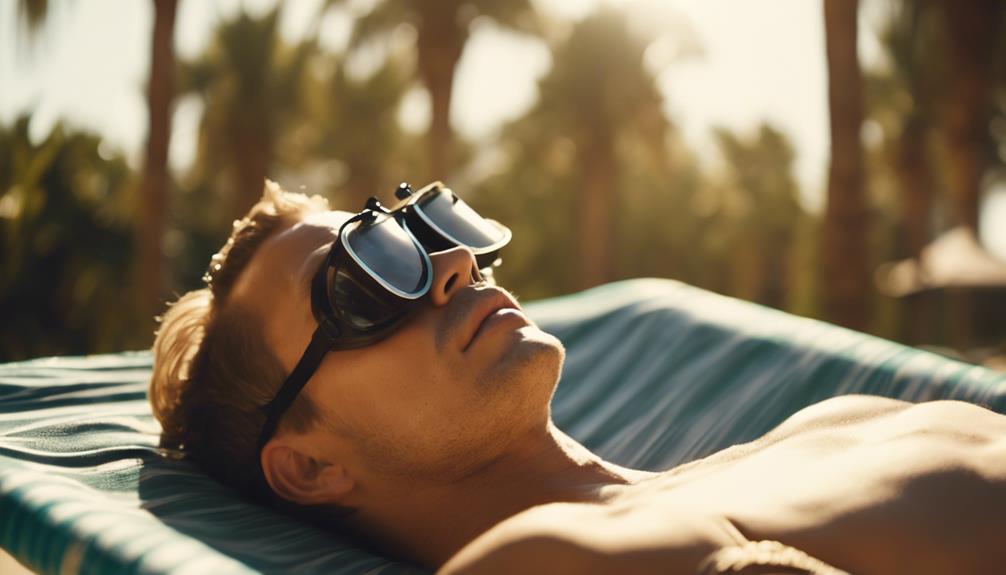
To guarantee maximum eye protection during tanning sessions, position your goggles snugly and adjust the straps for a comfortable fit that covers your entire eye area. Proper goggles positioning is vital to prevent UV exposure.
Here's how to make certain they're correctly placed:
- Check for Gaps: Inspect the edges of your goggles to make certain no skin or eye area is exposed.
- Adjust Regularly: Every few minutes, readjust the goggles to prevent slippage and make certain even tanning.
- Avoid Tan Lines: Position them properly to minimize the chance of unsightly tan lines around your eyes.
- Comfort Matters: Make sure the straps aren't too tight, as discomfort can distract you during your session.
Following these steps will help protect your eyes while you tan.
Additional Eye Protection Options
Even with properly positioned goggles, you can enhance your eye safety by considering additional protection options like UV-blocking stickers.
These stickers provide an extra layer of defense against harmful UV rays and are simple to apply and remove, promoting hygiene. They're particularly useful if you're concerned about any gaps in your goggles or want a little more peace of mind during your tanning sessions.
Another option is UV-blocking sunglasses, which can be worn post-session to protect your eyes from residual UV rays while you're outside.
Managing Tanning Duration
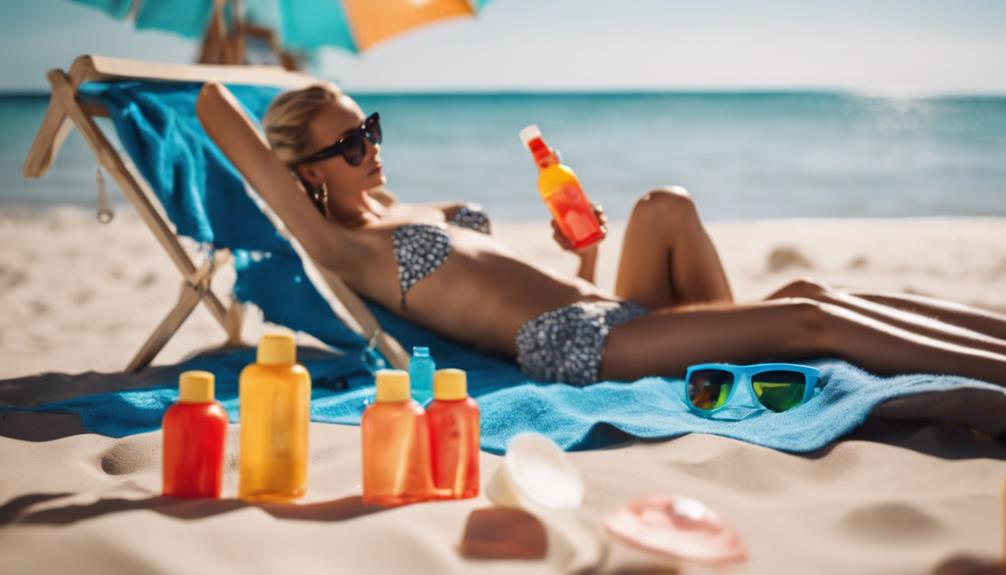
Balancing your tanning duration is essential for protecting your eyes and minimizing UV exposure. By managing how long you tan, you can keep your vision healthy.
Here are some tips to help you control your tanning sessions:
- Limit sessions: Aim for shorter tanning times, ideally 15-20 minutes, to reduce UV exposure.
- Set a timer: Use a timer to remind yourself when to stop, ensuring you don't exceed the recommended duration.
- Pay attention to your skin: If you notice any redness or irritation, it's time to cut back on your tanning.
- Space out sessions: Avoid tanning every day; give your skin time to recover and your eyes a break from UV exposure.
With these steps, you'll keep your eyes safer while still enjoying that sun-kissed glow.
Best Practices for Tanning
Protecting your skin and eyes while tanning is essential, so following best practices can help you achieve that sun-kissed look safely.
Start by investing in quality goggles designed for tanning; they'll block harmful UV rays effectively. Always wear your goggles snugly to prevent slippage and guarantee complete coverage.
Limit your tanning sessions to recommended durations, as shorter exposure reduces the risk of eye damage. Make sure to check salon guidelines and stay updated on safe tanning practices.
If you're using a tanning bed, consider UV-blocking stickers for extra protection.
Resources for Eye Safety
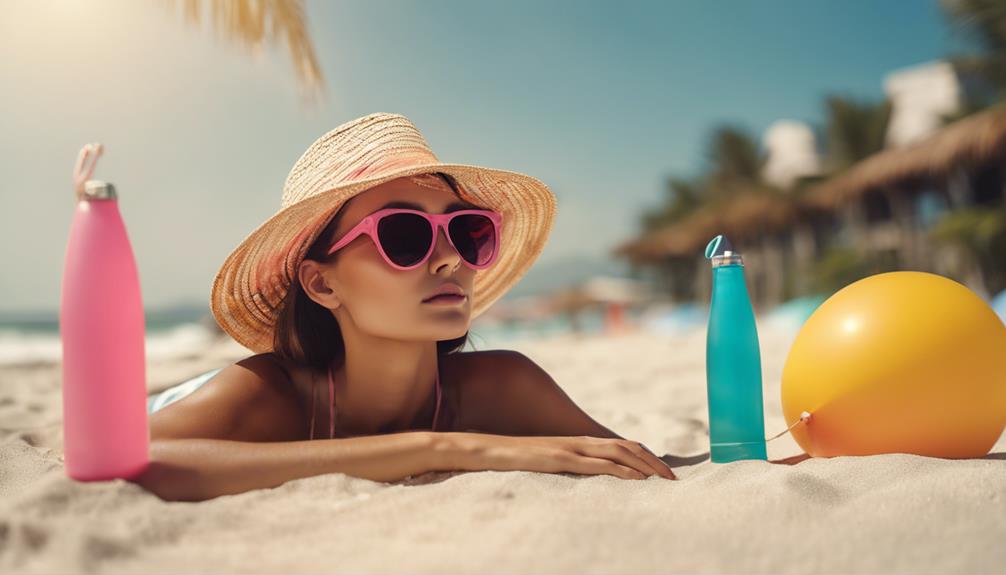
Several valuable resources are available to help you enhance your eye safety while tanning. Here are some essential options you should consider:
- Quality Goggles: Invest in high-quality, UV-blocking goggles specifically designed for tanning beds.
- UV-Blocking Stickers: Use these easy-to-apply stickers for extra protection against harmful rays.
- Tanning Salons: Follow guidelines provided by reputable salons, as they're often well-informed about safety practices.
- Educational Materials: Explore articles and guides on eye safety, such as “3 Best Practices for UV Eye Safety in Tanning.”
Frequently Asked Questions
Can I Use Regular Sunglasses Instead of Tanning Goggles?
You can't use regular sunglasses instead of tanning goggles. They don't block UV rays effectively, risking eye damage. Invest in quality tanning goggles designed for protection to keep your eyes safe during tanning sessions.
How Often Should I Replace My Tanning Goggles?
You should replace your tanning goggles every six months or sooner if they show signs of damage. Regularly checking for wear guarantees you maintain effective eye protection and keep your vision safe during tanning sessions.
Are There Any Natural Alternatives for Eye Protection?
Imagine a world where nature shields your eyes. While there aren't specific natural alternatives, consider wearing wide-brimmed hats or using UV-blocking stickers for added protection. Stay informed and prioritize your eye health effectively!
What Symptoms Indicate Eye Damage From Tanning?
If you notice symptoms like blurred vision, redness, or sensitivity to light, it could indicate eye damage. Don't ignore these signs; consult an eye care professional to assess any potential harm and get proper treatment.
Can Tanning Cause Long-Term Eye Problems?
Imagine bright rays dancing through the air, warming your skin. But yes, tanning can cause long-term eye problems. UV exposure might lead to cataracts or other serious conditions, so protecting your eyes is essential.
Conclusion
In summary, protecting your eyes while tanning is essential for your long-term vision health.
Why risk serious damage when simple precautions can keep your eyes safe?
By wearing quality goggles, positioning them properly, and managing your tanning duration, you can enjoy that sun-kissed glow without compromising your eyesight.
Remember, your eyes are just as important as your skin, so make eye safety a priority during your tanning sessions.
Stay informed and keep your vision clear!
